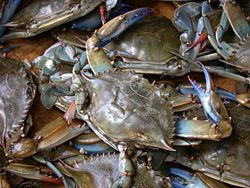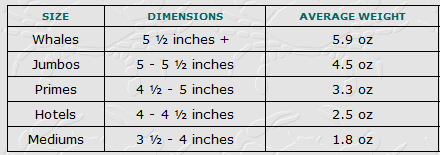Knowing More About Soft-Shell Crabs
As mentioned in my previous posts, my lovely nephew had bombarded me with his list of questions pertaining to soft-shell crabs. His curiosity has triggered me to search for the soft-shell crab information from the Internet. I think it is an opportunity for me to find out and learn more about seafood so that I would have more knowledge about something that I will be eating next time.
Soft-shell crab is one of the America’s most favourite seafood delicacy. It can be eaten with its entire crustacean. This is a result of catching and cooking the crab shortly after it molts the hard shell.
There are different types of species used as soft-shell crabs. It varies from region to region so the type of soft-shell crabs used in America is different from that used in the Asian countries. For example, the blue crab is typically used in the America. Whereas, the mangrove crab is used in Asia.
The scientific or binomial name for the blue crab is called Callinectes sapidus. This name is derived from the Greek’s calli=”beautiful”, nectes=”swimmer”, and Latin’s sapidus=”savory”. The blue crab is a crustacean found in the waters of the western Atlantic Ocean and Gulf of Mexico which is the Maryland State Crustacean.
The blue crabs shed their shells to grow and they grow rapidly from 12 to 18 months from their juvenile stage to adulthood. The length of a full-grown blue crab is about 8 inches long. It goes through several growth stages during its lifetime.
The soft-shell crabs are categorised into 5 basic sizes, ie. whales, jumbos, primes, hotels and mediums. Below is a table showing the size, dimension and weight of the soft-shell crabs :
So, this is the information that I have gathered so far about soft-shell crabs. It might not be complete but it probably helps to explain how the soft-shell crab come about and tells us about its origin. I hope I have answered most if not all of my nephew’s questions regarding soft-shell crabs.






































 Welcome To " My Piece Of Sky Blog "! Enjoy!! ~Cheers~
Welcome To " My Piece Of Sky Blog "! Enjoy!! ~Cheers~ 


